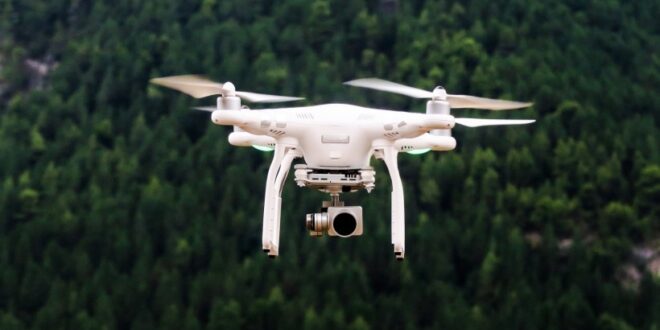Researchers at Princeton have developed a new approach for detecting greenhouse gas leaks. The team used lasers combined with the agility of drones to accurately detect and quantify large and small greenhouse gas leaks, localizing the source of emissions to within a meter.
The technology is also capable of spotting unseen leaks in hard-to-access areas. The researchers said the new approach is a game-changing innovation for atmospheric sensing.
(Photo: Pexels/ Pixabay )
Princeton’s Drone-based Method
The present methods for finding leaks frequently rely on labor-intensive handheld infrared cameras that are insensitive to minor leakage or use techniques that call for considerable measurement infrastructure to be set up beforehand.
However, the Princeton researchers’ drone-based method offers more freedom for establishing a sensing region.
The method employs a small drone with a retroreflector, which returns incoming light to its source when reflected, and a base station comprising gas detection apparatus.
An operator can locate the leak’s source and gauge its strength by bouncing a laser beam off the drone as it flies to specific spots around a suspected leak. This approach is regarded as the gold standard for finding leaks.
Drone-based approaches for atmospheric sensing already exist, but they entail attaching a gas sensor directly onto a drone, according to study co-author and professor of civil and environmental engineering Mark Zondlo.
Due to the weight a drone can carry and the inherent danger of piloting a drone crammed with pricey sensors in potentially dangerous situations, this technique may quickly run into significant hurdles.
The pricey gas-detecting components, however, were transferred by the Princeton group to the base station, which can be mounted on a mobile platform like a van so that the drone only needed to carry a small mirror.
Additionally, the sensing technique might make it possible to test several gases simultaneously, which is extremely challenging with conventional drone-based methods due to size, weight, and power issues.
Read Also: Australian Startup Offering AI-Powered Reforestation Drones Lands $200 Million Deal
“Unlocking Capability”
According to Michael Soskind, the study’s primary author and a graduate student in electrical and computer engineering, expanding the system to measure other gases in addition to methane, such as carbon dioxide and ammonia, would only require the addition of lasers with various wavelengths.
“The most exciting thing is not simply the methane sensing abilities of the technology we developed,” Soskind said in a press release statement.
“It’s really about unlocking the capability for researchers and practitioners to use drones and other remote sensing techniques to take detailed measurements of small leaks and reconstruct emissions plumes.”
With drones and other remote sensing methods, the system enables researchers and practitioners to precisely monitor tiny leaks and reassemble emissions plumes.
The device may save businesses time and money while assisting them in reducing the safety and environmental risks associated with leaks.
The work was further detailed in ScienceDirect.
Related Article: Zipline P2 Zip: New Machine for Precise Drone Delivery Debuts to Bring Packages Better and Quieter

ⓒ 2023 TECHTIMES.com All rights reserved. Do not reproduce without permission.
 Unmanned Aerial Vehicle The latest drone news
Unmanned Aerial Vehicle The latest drone news




